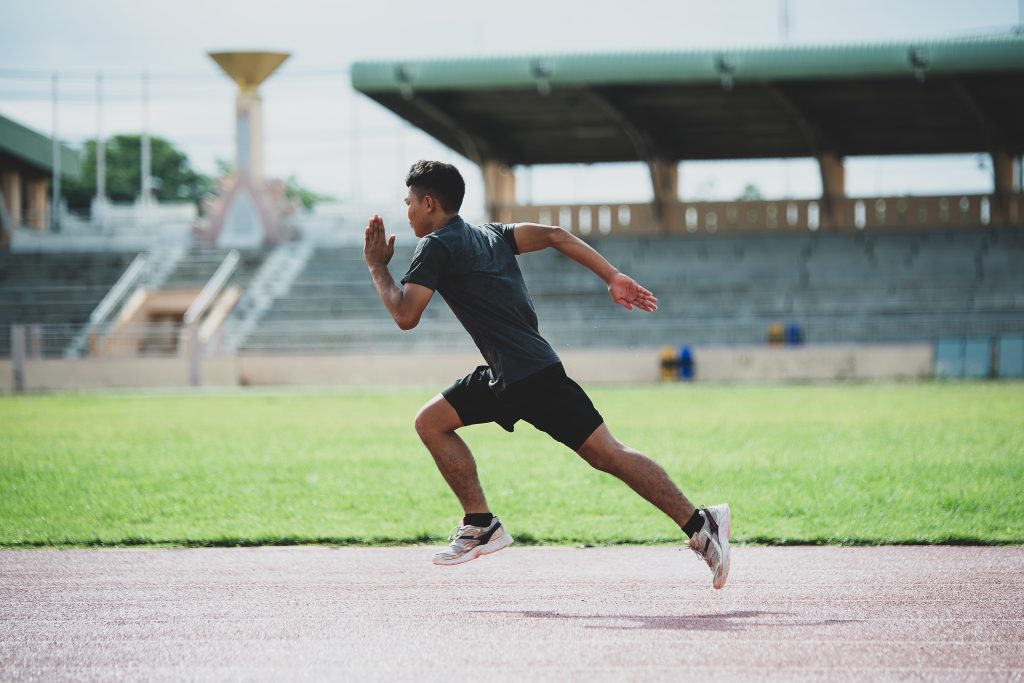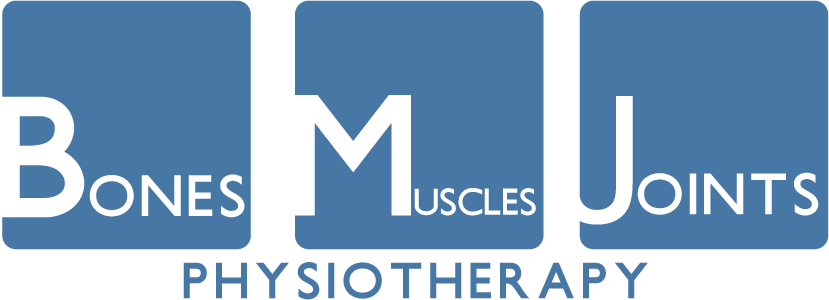How does Sports Physiotherapy work and What Does a Physiotherapist Do?
Physiotherapists are healthcare professionals who help maximize the quality of life through rehabilitation. They are equipped with the knowledge of human anatomy, physiology and various skills to aid with the recovery of their clients and proper maintenance of physical function.
As for what a physiotherapist is and what they do, they fall under the branch of medical professionals appointed with the appropriate knowledge of human anatomy. Recovery is all part and parcel of physiotherapy, and it’s intended this way to be an efficient approach to getting clients back on track while keeping past injuries in mind to prevent them from worsening. They achieve this by offering advice on lifestyle changes required to manage current or future conditions. All physiotherapists at BMJ Physiotherapy are recognized by the Allied Health Professions Council of Singapore.
Aside from that, by assessing and diagnosing movement dysfunctions, physiotherapists are able to restore strength and mobility to the patient’s body through various specialised techniques which involve stretching, joint manipulation, exercise prescription, hydrotherapy, and ultrasound.
Most multi-disciplinary physiotherapists work in hospitals and while the field they major in can be quite vast, it can be broken down into 3 main aspects.
Physiotherapy In 3 Parts
- The first is musculoskeletal, which deals with injuries that are directly tied to the bones, muscles, and joints of the human skeletal and muscle system. Back pain, arthritis, and ligament sprains are all categorized under this area of physiotherapy.
- Cardio-respiratory is another aspect that focuses on conditions that are linked to the lungs and the entirety of the human circulatory system. Diseases that fall under this wing include chronic bronchitis, pneumothorax, and chronic obstructive pulmonary disease (COPD).
- The final area of physiotherapy is neurology. Neurology deals with recovering clients who have suffered from conditions like strokes, seizures, and brain tumors. For cases of stroke patients, the level of severity could be quite extreme to the point where certain members of the body succumb to partial paralysis. In this case, physiotherapy would assist in getting the patient to slowly recover their control and movement over the affected body parts.
What is the difference between a physiotherapist and a sports massage therapist?

What is a sports massage therapist?
A sports massage therapist is well-versed in the knowledge of the human anatomy as well as the hands-on skills to help athletes with acute and chronic muscle pain and fatigue. They are useful adjuncts to physiotherapy can help to promote and supplement an athlete’s recovery. They specialize in providing pre-event and post-event care to athletes across all levels and fields. Sports massage therapy aims to help reduce pain and discomfort while improving performance, flexibility, range of motion, and overall body mechanics.
Sports massage therapists work with a variety of techniques such as dry needling, myofascial trigger point therapy, and deep tissue work to assist athletes who are recovering from injury or intense training sessions. However, some techniques might be abstained from these sports massage therapists due to lack of access to insurance, or the high possibility of danger when performing some of these methods. That said, sports massage therapists are qualified under Registered Massage Therapists (RMT) which requires constant maintenance through multiple hours of education and training.
What are the differences between a physiotherapist and a sports massage therapist?
A physiotherapist and a sports massage therapist are two healthcare professionals playing different roles. As aforementioned in the previous paragraphs, professional physiotherapists pivot around treating physical impairments and disabilities caused by trauma, illness, or post-surgery rehabilitation using specialized techniques in manipulation, mobilization, exercise prescription, and electrotherapy. Sports massage therapists, on the other hand, treat athletes who suffer from muscle injuries related to their training or sport. Utilizing soft tissue methods, they excel in reducing muscle tension, relieving pain, and improving the flexibility of their clients.
Musculoskeletal physiotherapists have a role in assisting both injured and healthy athletes. In the case of an injury, the physiotherapist will focus on assessing the athlete for rehabilitation in hopes of having them return to sports and perform as they used to. Examples of bodily injuries can come in the form of torn ligaments, knee pain, muscle strains and bone fractures.
Sports massage therapists work with the body’s muscles to release tension, increasing blood flow to parts that may have been overused during intensive activities, which will help with the muscle recovery process. With less tension in the muscle, the athlete will be less prone to getting a muscle strain.

What is the difference between sports physiotherapy and sports massage therapy?
Sports physiotherapy is a specialized form of musculoskeletal therapy that focuses on helping athletes maximize their performance and return to full fitness after an injury. Using strategies such as strength training, therapeutic exercises, and manual therapy to rehabilitate injured body parts. For the most part, sports physiotherapists are experienced in working with athletes of all statuses and positions, from professional teams to amateur sports clubs while also providing services across all age groups.
Sports physiotherapy aims to get rid of any muscular tension or imbalances that are found in the body. Treatments serve their purpose of preventing athletes from accumulating any further injuries but it also seeks to increase flexibility and reduce muscle soreness after the completion of an exercise or sport. Enhancing the performance of the athletes is also very key in sports physiotherapy. By evaluating the physical condition and profile of the athletes, they are able to give advice or intervene whenever necessary. Having the athletes perform at their best while being optimized goes a long way in prolonging their careers as well as inhibiting an environment where injuries can be prominent.
For other treatments that don’t offer the same rehabilitation benefits such as sports massage therapy, both forms of treatment can be used in conjunction with one another to maximize the results of an athlete.

What are the differences between the way sports physio & physiotherapists treat injuries?
One important thing to note is that sports massage pinpoints soft tissue issues, also known as muscle issues. Athletes who participate in intensive sports training, competitions and physical conditioning can often suffer from tensed muscles and fascia, resulting in pain and discomfort that could lead to poor performances. Sports massage addresses these restrictions to enable improved movement flow and quality.
Sports massage therapy involves deep muscle and fascia releases which are suitable for individuals with active lifestyles and sedentary office workers due to the common issue of neck aches and pains. These muscles undergo a phase of revitalization to fully recover and function as usual. These muscles undergo a phase of revitalization to fully recover and function as usual. As time goes on, muscle performance is enhanced under the therapy and will cut down the chances of it catching an injury.
Sports physiotherapy is more specific and in-depth when it comes to how the treatment is done. Contrary to sports massage therapy, sports physiotherapy deals with a lot of client assessment to pan out the order of appropriate and optimal treatment. Rather than being only limited to the muscles, physiotherapy also takes into account the tendons, ligaments, fascia, nervous system, biomechanics, and training load. Due to these varying factors extending across different individuals, it’s very common for physiotherapy to vary differently according to the patient at hand.
Due to the nature of the treatments, exercises that are given to patients to hasten their recovery are extremely reflective of the therapy they are tied to. For example, physiotherapy exercises would engage all parts of the body while sports massage would only be restricted to muscle-related exercises.
Benefits of Sports Physiotherapy Treatment for Working Adults & Athletes
Athletes
With athletes, the benefits of sports physiotherapy are a given. With the intensive training and activities they put themselves through on a daily basis, there needs to be supervision and advice to ensure that they will be prepared for the long haul. Sports therapy does wonders for athletes because it steels the body into prime condition to enhance their performances while maintaining a conscious effort to avert sustaining injuries or significant damage to the body. Should there not be a physiotherapist to keep tabs on the well-being of these athletes, one injury can be all it takes to transform a momentous career into an out-lived one.
The benefits of physiotherapy care are tailored according to each individual’s needs, especially concerning the activities they perform. From improved flexibility, strength, and coordination, to enhanced muscle recovery, reduced risk of injury, and improved overall physical fitness, physiotherapy is the source of everything an athlete could need in looking out for their health. It offers them an opportunity to train smarter rather than relying on harder.
Working Adults

While working adults may seem like they get the shorter end of the stick as compared to athletes when it comes to sports physiotherapy, a lot of similar benefits can be acquired despite how jarring the two lifestyles appear to be. For working adults who sit in front of the computer all day or have physically demanding jobs, sports physiotherapy can provide much-needed relief from the strain placed on the body. Through intentional exercises and stretches, the muscles used in everyday life can be strengthened while reducing stress on joints that may have become overworked or strained causing tennis elbow or neck pain . As a result, by incorporating sports physiotherapy into their daily routine, working adults will enjoy increased energy levels throughout their workday as well as improved posture which reduces fatigue.
Working in the office may differ from the active lifestyles of athletes but the gradual impact of improper sitting posture or excessive work can lead to the body taking a toll on itself. Approaching a physiotherapist will isolate these problems and help guide these working adults toward the most optimal way of performing in their jobs that will not compromise in the area of their health.

Physiotherapy Services Is Claimable Under Both Personal Accident Insurance Plans & Corporate Insurance for Approved Physio Clinics
Most health insurance plans will cover your physiotherapy rehabilitation. If you’re a working adult, chances are your company’s medical insurance covers your trips over to the physiotherapist. Insurance companies have got different plans and benefits therefore it is important to have your physiotherapist contact your insurance provider before progressing forward. However, in most cases, you would have access to several visits that will have been accounted for. Excess expenses will have to be covered on your own accord should you use up the quota assigned by your insurance agency.
Within the context of personal accident insurance plans, appointments with the physiotherapist will be processed similarly to corporate insurance. If you’re looking to schedule an appointment with a physiotherapist, BMJ Physiotherapy, a preferred partner of major health insurance companies such as Cigna, Aetna, BUPA, International SOS, and IHP, provides arrangements for Direct Billing. So long as the green light’s been given by the insurance company to proceed with the services, the bulk of the bills will be directed to the valued partners. Click here for more information about No Frills Claims at BMJ Physiotherapy.

Benefits of pediatric sports physiotherapy treatments and services for kids/youth with sports injury
Sports injuries amongst kinds are often treated with rest and medications to mellow down the pain. However, the most effective way to recover from sports-related injuries is through pediatric sports physiotherapy. This specific therapy helps kids regain their strength and flexibility, while also providing important education on how to prevent injuries in the future.
Naturally, youths have stark differences in physical abilities and build compared to adults, the focus of physiotherapy has to be shifted to other areas that are as crucial and relevant to the kids. Pediatric sports physiotherapy focuses on these very needs encountered by children. With this in mind, the approach is individualized for each child, factoring in their unique condition and goals for recovery. The therapy’s objective in particular will be conducted with the child’s safety at the forefront. It aims to help the kids return to sports and physical activities with proper techniques and movement patterns that will keep them healthy.
It is also essential to have children taught the importance of looking out for themselves. Having them exposed to physiotherapy at a younger age will mould them to be more aware of their bodies and how they can better manage them. Understanding the difference between growing pains and sustained injuries will also go a long way in preventing any serious injuries from festering by reporting directly to any responsible adult as soon as it’s been identified.
Youths who are more active than their peers in sports or other activities can also have physiotherapy to improve their skills and movement patterns. Personalized exercises for children will not only make it easier for them to learn and integrate into their lifestyle but also provides them with long-term benefits in areas of posture, reflexes, and physical recovery time.
Prevent Future Recurrence of Sports Injury Through Personalised Treatment Plan & Sports Massage With BMJ Physiotherapy Singapore
Here at BMJ Physiotherapy, our physiotherapy clinic in Singapore provides a range of treatments that also includes both Sports Injury Physiotherapy and Sports Massage. The benefits go far and wide in either treatment, but it doesn’t just stop there. Our team consists of professionals who are more than capable to provide you with excellent service experience. You are our priority. We wouldn’t want to compromise on anything else if it meant our client receiving any less than our best. We’ve got any conditions covered and the treatments to have you live your best life. Want to know more? Contact us today!


